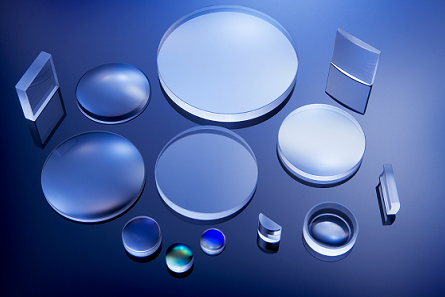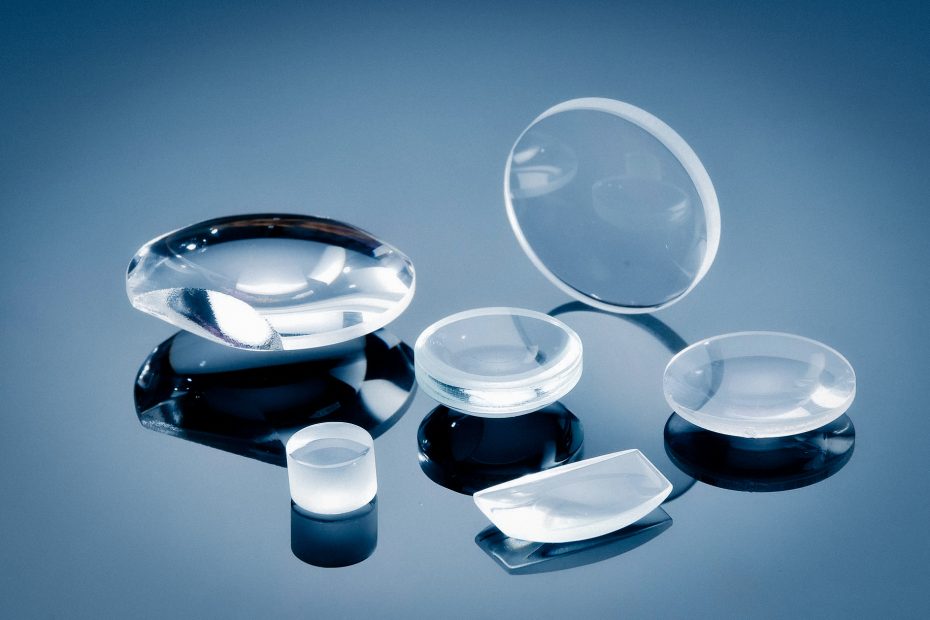Definition of Optical Glass
The glass can change the direction of light propagation and change the relative spectral distribution of ultraviolet, visible, or infrared light.
Optical glass in the narrow sense refers to colorless optical glass; optical glass in the broad sense also includes colored optical glass, laser glass, quartz optical glass, anti-radiation glass, ultraviolet and infrared optical glass, fiber optic glass, acousto-optic glass, magneto-optical glass, and photochromic Glass.
Optical glass can be used to manufacture lenses, prisms, mirrors, and windows in optical instruments. Components made of optical glass are key elements in optical instruments.

The Prospect of Optical Glass
Optical glass is the foundation and an important part of the optoelectronic technology industry. The development of optical systems constantly puts forward new requirements for the optical properties of optical glass, which promotes the development of optical glass.
As the basic material of optoelectronics, the application of optical glass in the three major fields of optical transmission, optical storage, and optoelectronic display has been advancing by leaps and bounds and has become one of the basic conditions for the development of social informatization, especially optoelectronic information technology.
With the continuous and stable development of China’s domestic economy, China’s optical glass manufacturing industry is developing rapidly.
Introduction of optical glass
Glass materials are used in the manufacture of lenses, prisms, mirrors, windows, etc. for optical instruments or mechanical systems.
Including colorless optical glass (usually referred to as optical glass), colored optical glass, radiation-resistant optical glass, radiation-resistant glass, and optical quartz glass, etc.
Optical glass has high transparency, high uniformity in chemistry and physics (structure and performance), and specific and precise optical constants.
It can be divided into silicate, borate, phosphate, fluoride, and chalcogenide series.
There are many varieties, mainly classified according to their positions in the refractive index (nD)-Abbe value (VD) diagram.
Traditionally, various types of glass with nD>1.60, VD>50 and nD<1.60, VD>55 are designated as crown (K) glass, and other types of glass are designated as flint (F) glass.
Crown glass is generally used as a convex lens, and flint glass is used as a concave lens.
Usually, the crown glass belongs to the alkali-containing borosilicate system, the light crown glass belongs to the aluminosilicate system, the heavy crown glass and barium flint glass belong to the alkali-free borosilicate system, and most of the flint glasses belong to the lead potassium silicate system. system.
With the continuous expansion of the application field of optical glass, its varieties are constantly expanding, and its composition includes almost all elements in the periodic table.
An inorganic glassy material that transmits light by refraction, reflection, or transmission, or changes the intensity or spectral distribution of light by absorption. It has stable optical properties and high optical uniformity.
Classification of optical glass
- Colorless optical glass
There are specific requirements for optical constants, and it has the characteristics of high transmission in the visible region and no selective absorption and coloring. According to the Abbe number, it is divided into crown-type and flint-type glass, and each type is divided into several types according to the refractive index, and arranged in order according to the refractive index. It is mostly used as lenses, prisms, mirrors, etc. for telescopes, microscopes, and cameras.
- Anti-radiation optical glass
It has a very large absorption capacity for high-energy radiation. There are high-lead glass and CaO-B2O2 system glass. The former can prevent γ-ray and X-ray radiation, and the latter can absorb slow neutrons and thermal neutrons. It is mainly used in the nuclear industry, medical fields, etc. as shielding and peeping window materials.
- Radiation-resistant optical glass
Under certain γ-ray and X-ray irradiation, the transmittance in the visible area changes less, and the variety and grade are the same as colorless optical glass, which is used to manufacture optical instruments and peep windows under high-energy irradiation.
- Colored optical glass
Also known as filter glass. It has selective absorption and transmission properties for specific wavelengths in the ultraviolet, visible, and infrared regions. According to the spectral characteristics, it is divided into three types: selective absorption type, cut-off type, and neutral gray; according to the coloring mechanism, it is divided into ion coloring, metal colloid coloring, and sulfur selenium. There are three types of compound coloring, mainly used in the manufacture of optical filters.
- UV and IR optical glass
It has specific optical constants and high transmittance in the ultraviolet or infrared band and is used as an ultraviolet or infrared optical instrument or as a window material.
- Optical quartz glass
With silicon dioxide as the main component, it has the characteristics of high-temperature resistance, low expansion coefficient, high mechanical strength, and good chemical properties. It is used to manufacture prisms, lenses, windows, and reflectors that have special requirements for the transmission of various wavelength bands.
In addition, there are photomasks, liquid crystal display panels, and video disk-based thin glass used in the manufacture of large-scale integrated circuits; magneto-optical glass in which the polarization plane rotates when light passes through the glass along the direction of magnetic force lines; light passes through the transmission in a certain direction Ultrasonic glass, acousto-optic glass that undergoes light diffraction, reflection, convergence, or optical frequency shift.
The development direction of optical glass
Since various new varieties of optical glass have more or fewer defects in processing or use performance, researching and expanding the field of optical glass, is also aimed at improving the physical and physical, and chemical properties of various new varieties of optical glass.
Looking at the above historical development process, it can be predicted that the future development direction of optical glass is:
- Glass with a particularly high refractive index is made;
- Preparation of glass with special relative partial dispersion;
- Develop infrared and ultraviolet optical glass;
- Replace some undesirable components in glass such as radioactive THO2, toxic BcO, Sb2O3, etc.;
- Improve the chemical stability of glass;
- Improve glass transparency and prevent glass radiation coloring;
- Improve the process and reduce the price of new types of glass.
